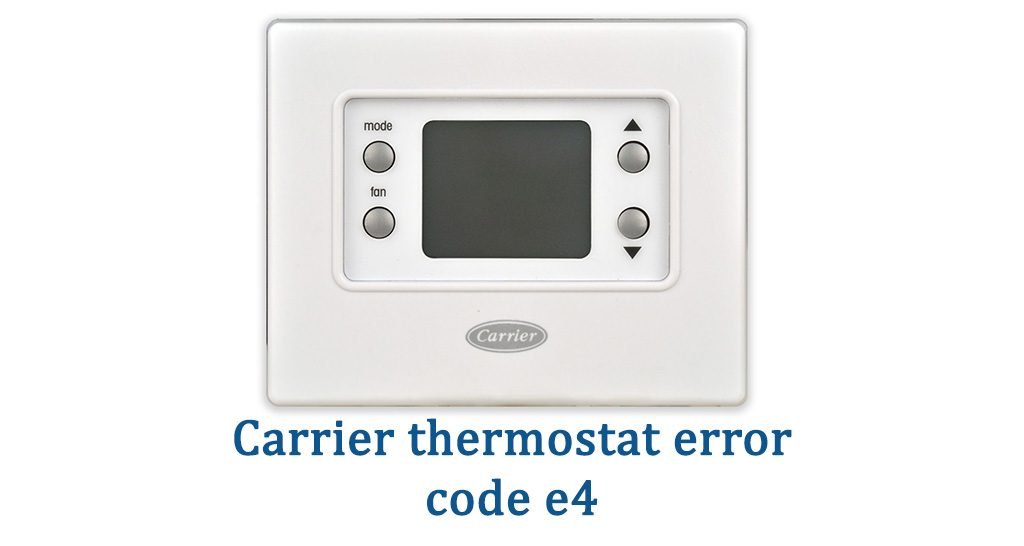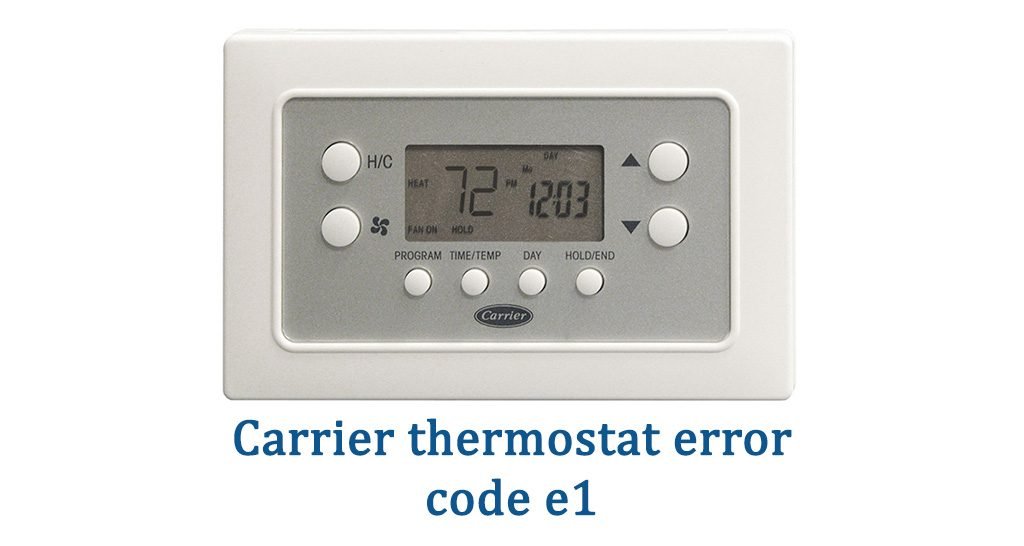If you’re a Carrier thermostat owner, you are probably familiar with the superior comfort and efficient heating and cooling control it offers. But like any tech-based system, you may encounter certain error codes that can disrupt its operation. Among the most common codes are E1, E2, and E4. Today, we will delve into these specific errors and provide insight into what they mean, as well as potential solutions to restore your system’s functionality.
The E1 error is typically an indication of a lack of communication between your Carrier thermostat and the rest of your heating, ventilation, and air conditioning (HVAC) system. This communication lapse could be due to issues with the system’s wiring or problems with your HVAC equipment. If you see this error on your thermostat’s display, it’s essential to address it promptly to ensure the continued efficient operation of your HVAC system.
Firstly, make sure to check the wiring connecting your thermostat and HVAC system. If you notice any loose connections or damaged wires, you should have them fixed by a qualified technician. If the wiring seems intact, it’s possible that your HVAC equipment might be malfunctioning. In such a case, it’s recommended to seek professional assistance.
Next is the E2 error code, which is usually associated with a malfunction in the system’s temperature sensor. This issue can significantly affect your Carrier thermostat’s ability to regulate temperature properly and provide comfortable conditions. Thus, if you encounter the E2 error, your priority should be to rectify it.

To address an E2 error, you’ll need to inspect your system’s temperature sensor. You can find it inside your thermostat. Make sure that it isn’t covered with dust or debris, as this can interfere with its functionality. If the sensor appears clean but the error persists, it may be defective and need replacement. Again, if you’re uncertain about performing these steps, it’s wise to get help from a professional technician.
Finally, the E4 error code signals a problem with the thermostat’s internal memory. If this code is displayed, it means that the device has encountered a difficulty reading or writing data to its memory. This error could be triggered by power surges, abrupt power loss, or even the thermostat’s age.

Resolving the E4 error might require a system reset. To do this, you can usually find a small reset button on your thermostat. Keep in mind that this will return all your thermostat settings to their factory defaults, so you will need to reprogram them afterwards. If a reset doesn’t solve the problem, the thermostat may need to be replaced.
As a Carrier thermostat user, understanding these common error codes can empower you to make informed decisions when they occur. Remember, though, that HVAC systems are intricate and involve high voltages, so it’s always best to involve a professional if you are unsure or uncomfortable handling these issues.
In conclusion, error codes E1, E2, and E4 on your Carrier thermostat are an indication of potential problems that could impede your comfort. However, by understanding what they signify and knowing the basic troubleshooting steps, you can minimize their impact on your heating and cooling system. Always prioritize your safety, and don’t hesitate to seek professional help when necessary. By doing so, you ensure the longevity and efficiency of your Carrier thermostat and HVAC system.
